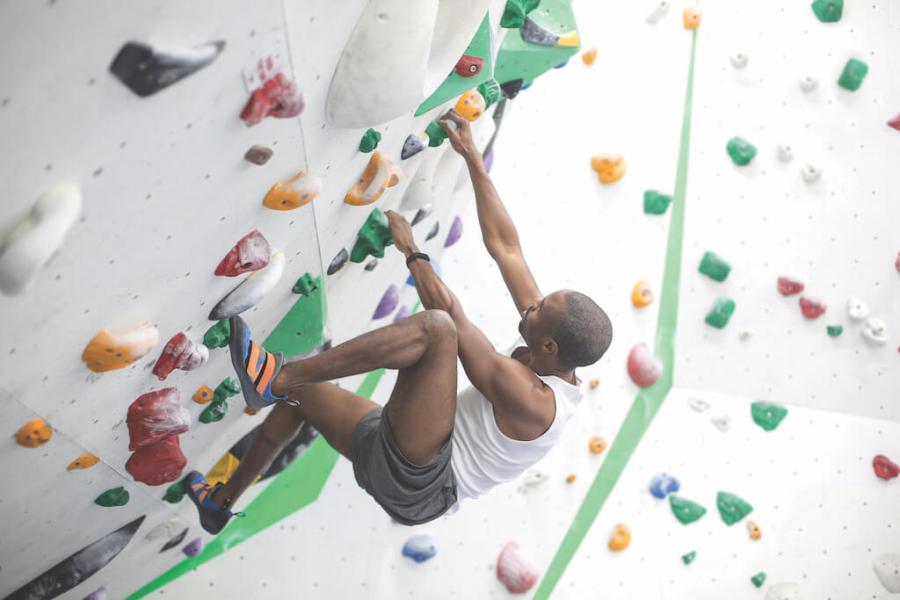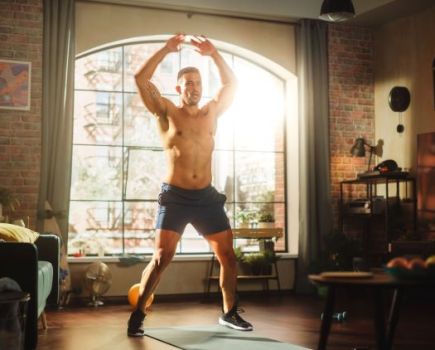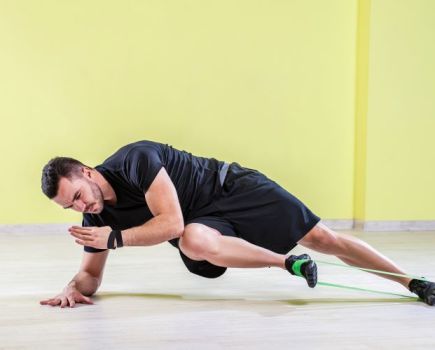Climb your way to full-body strength and a rock-solid physique with pro climber Robbie Phillips’ technique tips.
If you’re looking for a whole-body, functional workout that gets your adrenaline pumping and gives you physical challenges to solve, indoor climbing is the sport for you.
Whether you prefer bouldering on low-rise problems, or roping up and scaling 12m walls, climbing is a versatile workout that can help you achieve a wide variety of body goals.
We asked Robbie Phillips, a professional climber and former Team GB coach from Edinburgh, for his best advice.
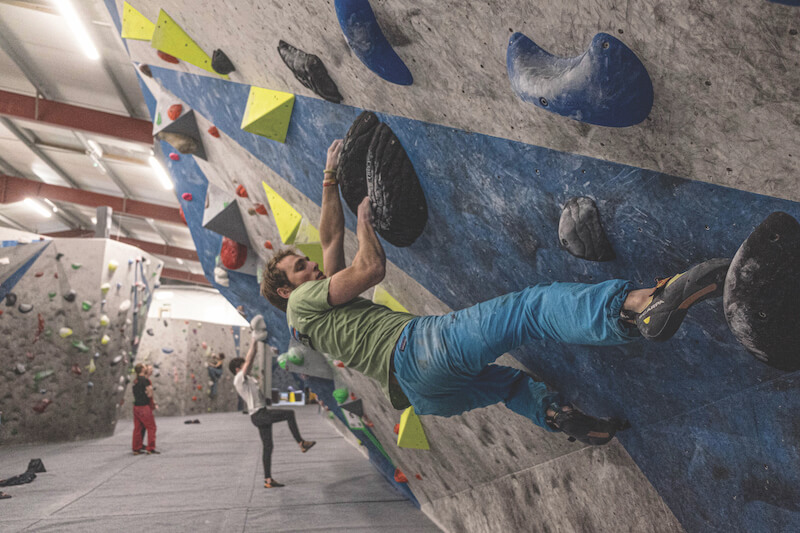
Tough problems require you to think with your feet | Photo: Matt Ray
1. Watch Your Feet
The first thing we all tend to do when attempting a new climb is to look up at the handholds. It seems the most logical approach, but climbing requires a lower-body-first approach. Ninety per cent of your power comes from your legs, and your feet provide the platform for that power.
“Focus on only using the inside edge, outside edge, and toe of the foot,” says Phillips. “Lots of people don’t trust their feet when they first start out – they want to put the balls of their feet on the footholds, but if you want to move with freedom you need to be able to pivot your foot on a hold without it rolling off.”
Rock climbing shoes are designed to grip with the very edges and points of the sole. “Nailing being able to use these, by rolling a full 180° from the inside edge to the outside while staying on the foot hold, will give you the full range of motion throughout your whole body, giving you a longer reach,” adds Phillips.
2. Straighten Those Arms
Many beginner climbers make the mistake of pulling their upper bodies into the climb, as if bicep-curling themselves up the wall, but that is a fast-track to fatigued, pumped-out arms.
Phillips recommends countering this trend by consciously keeping your arms as straight as possible.
“Always try to reach handholds without pulling too hard on your arms,” he says. Save your arm strength for those really marginal moves, or locking off (with arms fully bent), as you move to the next hold.
3. Push Don’t Pull
“Even when you see very explosive moves in climbing, it’s because the big muscles in the legs have pushed and then the arms have directed that power,” says Phillips – and the biggest mistake indoor climbers make is generating power from their arms.
“You need to be able to put as much weight through your legs as possible,” Phillips continues, “and for that you need flexible hips, which allow you to get into a ‘frog’ position on the wall.”
A lot of men have tight hip flexors, so working on your hip flexibility after every climbing session is going to pay dividends in the long run.
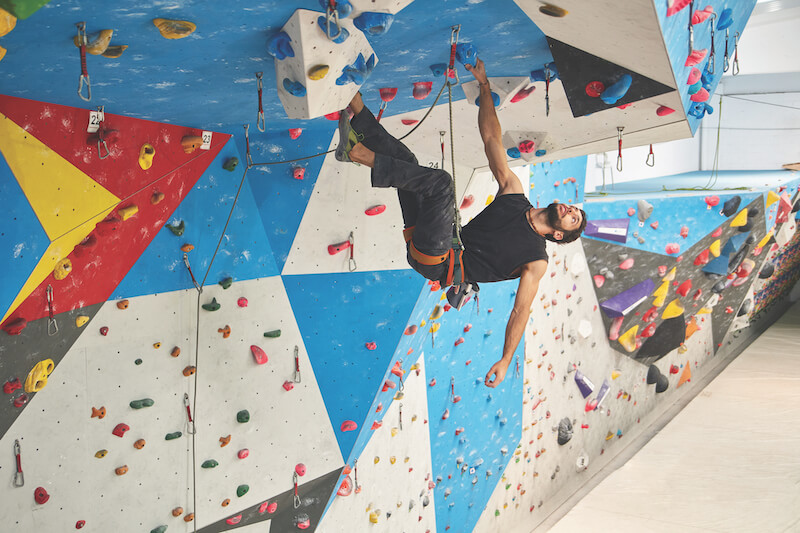
If you’re serious about improving, there’s no substitute for time spent climbing | Photo: Getty Images
4. Practice, Practice, Practice
In a world of online training programmes, Phillips is old school. “I actually have not followed a set training programme in a long time,” he says, “and I’m climbing the best I ever have. For me, climbing is the best training for climbing – what do you want is a high level of specificity in the training that you are doing.”
So if your goal is to climb a particular tricky slab, or steeply overhanging boulder problem, spend the majority of your time on the wall working those specific kind of routes.
But if you do want a bit more structure to your sessions, Phillips recommends simple protocols, like pyramids…
5. Build a Pyramid
“This session structure is a great way to get a lot of climbing mileage, but also build up to a peak,” says Phillips.
“As an example, you might do your traversing warm-up, then start with five V0s, then do four V1s, then three V2s, then maybe one or two V3s [these V grades are for boulder problems of escalating difficulty, marked on climbs at UK gyms]. Then you’ll work your way back down again.”
Phillips points out that this gets you climbing hard, but also tapers the intensity off towards the end of the session.
“At that point you don’t want to be pulling hard,” he says, “because you’ll be tired and more likely to get injured, but this still gives you some mileage to finish off your session.”
Words: Matt Ray

